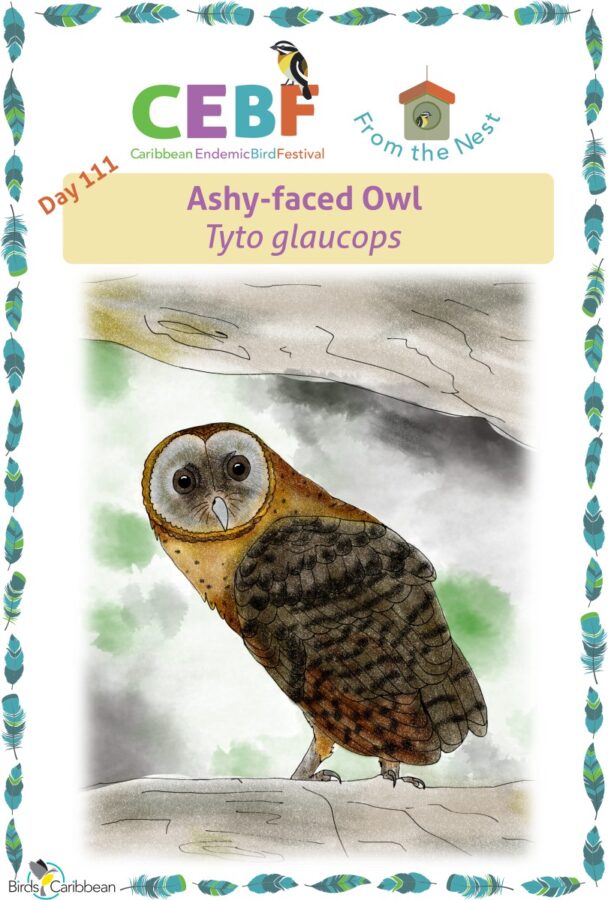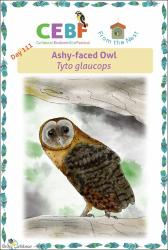/admin/item?itemID=26f44dce-14aa-49ad-9d5d-54f59ac89ab6
Endemic bird of the day : Ashy-faced Owl
Type of Access
OpenMaterial Type
Infographic - PosterLanguage
EnglishCollection
- Colección general [2182]
- Recursos educativos [766]
Metadata
Show full item record| Abstract: | Caribbean Endemic Bird Festival (CEBF) day 111 poster, dedicated to the Ashy-faced Owl (Tyto glaucops), endemic to the island of Hispaniola (Haiti and Dominican Republic). It is a close relative of the Barn Owl (Tyto alba), but it is much darker and smaller. Its adorable heart-shaped face is ash gray which gives rise to its common name. It is easy to distinguish a night owl from a daytime owl by the color of its eyes. The Snowy Owl, the owl featured in “Harry Potter,” has yellow eyes and is a good example of a daytime owl. The Ashy-faced Owl has black eyes and is a night owl or nocturnal hunter. It feeds mostly on small mammals (rodents and bats), but its diet includes more than thirty species of birds, plus reptiles, amphibians, and invertebrates. Although the Ashy-faced Owl is considered abundant on the island, and is not threatened (Least Concern) its population is considered to have declined since 1930. This is due to the destruction of its habitats and the scarcity of nesting cavities. It is also suspected that its close relative, the Barn Owl, may be competing with it for nesting sites. Unfortunately, owls are also persecuted and often killed because they are believed to be omens of death. This is a quite common, but unfounded superstitious belief in the Caribbean. Ashy-faced Owls live in many types of habitats: open fields, both dry and wet forests, scrub, cave areas, agricultural plantations, palm plantations, and abandoned buildings, but they prefer dense wooded areas. Their calls consist of a harsh “shaaaaaa” sound that looks like a whistle and rapid clicks like those of insects. They breed from January to June, nesting in natural cavities such as hollows in trees, in caves, in limestone cliffs, and in artificial places. They lay 3 to 4 white eggs. The eggs of birds nesting in dark cavities are almost always white, perhaps because in the dark they cannot be seen by predators. Only females incubate the eggs. Incubation lasts from 30 to 32 days. Females are much larger and stronger than males—they weigh more than 500 grams, while males weigh between 300 and 350 grams. Therefore, in cases of “domestic disputes” between a nesting pair, the male is the most vulnerable. But there is an advantage to being smaller. Males, being smaller and more agile, hunt different prey from females. Their diet is more varied and this helps reduce competition for food between the sexes. In captivity a pair with three chicks consumes on average a dozen mice per night, which proves their importance as biological controls. Perhaps whoever kills an owl should be condemned to eat twelve mice a day for several weeks! As a complement to the poster, a coloring sheet is included. |
| Author(s): | BirdsCaribbean
|
| Date: | 2023 |
| Published: | BirdsCaribbean |
| Citation: | BirdsCaribbean (2023). Endemic bird of the day: Ashy-faced Owl. From the Nest (Day 111). BirdsCaribbean. Recuperado de: |
| URI: | https://bvearmb.do/handle/123456789/4013
|
Afiche / Poster



